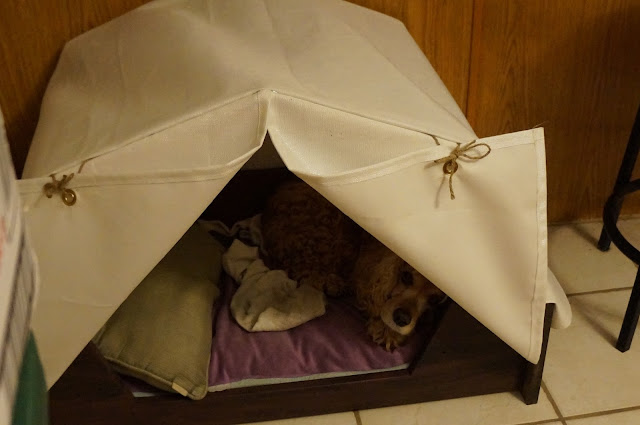This is what I started with. It looks like old suitcase, but it was actually a small wardrobe trunk. On one side there was a swing down tray, and the other side, hanger brackets.
The first step was to remove the all the guts from the inside. One end of the trunk was hinged and, when stood on end, this panel would swing out of your way so you could access your clothes. Since the desk would not need this, the brackets were removed and the panel screwed closed.
Once the interior was removed I added some textured paper.
Here's the paper glued in place.
Probably the most important part of the desk is the structural frame. It stiffens the panels of the desk, provides something firm for the drawer to ride on, gives the legs something solid to bolt to, and will really hold the weight of the desktop. It's just a simple flat frame that will sit in the bottom of the trunk.
The drawer is a shallow plywood box constructed with box joints and a dado joint around the inside to hold the bottom of the drawer.

The height of the drawer is figured from the top of the structural frame (on which the drawer will sit) to the under side of the desktop.
This is a close-up of the drawer runner on the underside of the drawer. The runner will attach to the bottom of the drawer and the rail will span the frame.
I know...sounds confusing...so here's a labeled pic of the structural frame.
Here's the drawer riding on the frame.
Next up came the legs. I designed a simple "X" style leg to keep with the campaign style look I was going for. I drew it out full size on some rolled craft paper so I can transfer all the angles to my miter saw and can check the pieces after they're made.
The assembled legs.

All the wood pieces on this project are made from salvaged oak flooring. Here the desk top pieces are glued together and clamped.
Once the glue is dry the desktop is flipped over, trimmed down to size, and fitted in place.

Thin oak pieces are glued together to form the top and bottom pieces of the sorter. Then dados were cut to hold the divider pieces, the end pieces were left thick, and a thin plywood panel was nailed onto the back.
I made some small drawers out of thin plywood for end cubbies on the sorter. Oak veneer was glued on the front to dress it up, and leather pulls made from a Salvation Army belt.
Trim, sand, check the fit; trim, sand, check the fit; sand, check the fit...you get the idea. Once everything seems to fit well comes the part I hate most; cutting the front panel off to make the drawer face. If I screw up badly I've ruined the suitcase. (I did screw up...but not badly)
I lined up the drawer face on the front of my drawer, drilled a few small holes, and used some small nuts and bolts to attach it.
I made a few more accessories from oak including a cork board frame (left), a retaining knob (middle), and a swing down shelf (right).

The hard board fill of the handle was exposed when I got the trunk so I had to cut a piece of leather-look vinyl and hand stitch it around the handle.
The sorter attaches to the suitcase lid with a very blurry nut and bolt.
A coat of stain and a few coats of poly round out the finish.
Detail of the leather pulls on the sorter drawer.
Sorter and shelf fold into the lid.
Other than a good cleaning the outside of the case was left as is. All the peeling labels are original and character and provenance to the piece. The desk closes up when when company's coming.
Now I can sit down and get some paper work done--just as long as I don't wake Jessie.


































































